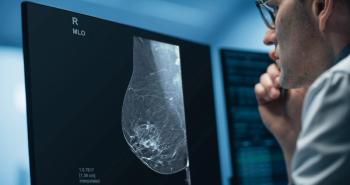
Earlier Cardiovascular MR Offers Clarity for Patients with Unclear Diagnoses
Performing a CMR shortly after hospital admission identifies more patients with broken-heart syndrome.
Performing an early cardiovascular magnetic resonance (CMR) scan after a heart attack can improve the rate of diagnosis for patients who have no obvious coronary artery cause.
Approximately 10 percent of all patients who have a heart attack fall into this category, and they are typically given a working diagnosis of myocardial infarction with non-obstructive coronary arteries (MINOCA). Ultimately, many of these patients – most of whom are women – are diagnosed with stress-induced takotsubo cardiomyopathy, otherwise known as broken-heart syndrome.
“Around 80-to-90 percent of broken-heart sufferers are women, and the disease is associated with mental stress,” said Per Tornvall, senior physician and professor in the clinical science and education department of Stockholm South General Hospital at Karolinska Institutet. “There also seems to be a link to hypersensitivity towards stress caused by low estrogen levels. Unfortunately, research on the investigation and treatment of myocardial infarction is often done on men, while female heart disease is less studied.
Related Content:
Frequently, a CMR is conducted on these patients roughly 10 days post-heart attack, often leading to a diagnosis of broken-heart syndrome or myocarditis. However, fewer than 50 percent of patients are diagnosed this way. However, in an article published April 14 in
For their prospective study, the Stockholm Myocardial Infarction With Normal Coronaries 2 (SMINC-2), the team conducted 1.5T CMR on 148 patients with a MINOCA diagnosis, completing T1- and extracellular volume mapping during early hospital admissions. They captured and compared the same images from 150 control patients – individuals from the previous SMINC-1 study with a MINOCA diagnosis who were not imaged with mapping techniques.
Related Content:
Scans in SMINC-2 were performed three days post-admission instead of the 12 days during SMINC-1. Tornvall’s team’s analysis showed that 77 percent of their enrolled patients received a diagnosis with CMR imaging versus the 47 percent from SMINC-1.
In addition, the team determined that CMR conducted during SMINC-2 detected more myocarditis (17 percent versus 7 percent), as well as more takotsubo syndrome (35 percent versus 19 percent). However, they had similar results for heart attack (22 percent and 19 percent, respectively) and other cardiomyopathies (3 percent and 2 percent, respectively).
The team also noted that the CMR images gathered in SMINC-2 were a considerable improvement over those from the previous study because they offered advanced tissue characterization. Questions still exist, though, about the full effect of the augmented CMR technique.
“We don’t know how much effect the improved CMR technique has, but the results suggest that with early examination more patients can get a correct diagnosis and, therefore, the right treatment,” Tornvall said.
Their findings support using CMR imaging earlier for diagnosis of patients with MINOCA. But, there is still more work to be done, he said.
“The next step is for us to develop the CMR examination with pharmacological stress of the heart," he said. "This will enable us to study the smallest of the blood vessels and, hopefully, find a cause for the 23 percent who received no diagnosis.”
For more coverage based on industry expert insights and research, subscribe to the Diagnostic Imaging e-Newsletter
Newsletter
Stay at the forefront of radiology with the Diagnostic Imaging newsletter, delivering the latest news, clinical insights, and imaging advancements for today’s radiologists.




























